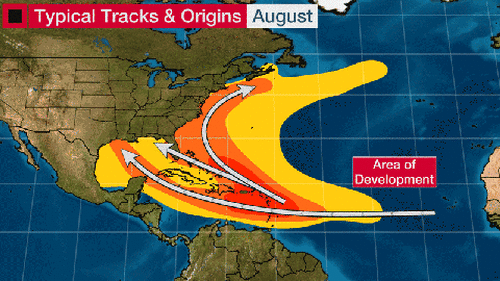Hurricane Drones Head To Gulf Of Mexico For First Time
Saildrone Inc. and the National Oceanic and Atmospheric Administration (NOAA) are set to launch a fleet of hurricane monitoring drones into the Atlantic Ocean, and for the first time, in the Gulf of Mexico.
(1/2) Saildrone 1032 being added to the autonomous armada of ocean drones to help better 4cast hurricanes. This one has the eastern Gulf of Mexico as it’s mission responsibility for the next 90 days. SD1032 is one of 7 responsible for the Atlantic development basin. pic.twitter.com/ZitWY7AFfg
— Jim Cantore (@JimCantore) August 2, 2022
A total of seven Saildrone uncrewed surface vehicles (USVs) are heading out for deployment, stationed in areas with a high probability of intercepting a hurricane. Five USVs will sail around the Atlantic and two in the Gulf of Mexico.
The 23-foot-long USVs captured a stunning video of “where no research vessel has ever ventured” before, the eye of a major storm during the last hurricane season. The vessel sailed through the eye of Category 4 Hurricane Sam in September, battling massive 100-foot waves and roaring 140 mph winds.
Saildrone USVs will collect real-time observations from hurricanes that will help forecasters improve storm prediction modeling.
“Storms that intensify rapidly can cause extensive damage and loss of life and real-time observing systems are crucial to better understanding the atmospheric and oceanic processes that lead to the formation and intensification of these hurricanes,” said John Cortinas, Director of NOAA’s Atlantic Oceanographic and Meteorological Laboratory.
NOAA predicts an above-average 2022 hurricane season, with up to 21 named storms and three to six major hurricanes. Even though the season’s first two months have been uneventful, peak season has just begun, as illustrated in the graph below.
The seven saildrones will join a fleet of underwater gliders, surface drifters, profiling floats, and aerial assets to monitor storms.
“Uncrewed marine and aircraft systems have the potential to transform how NOAA meets its mission to better understand the environment.
“These exciting emerging technologies provide NOAA with another valuable tool that can collect data in places we can’t get to with other observing systems,” said Capt. Philip Hall, director of NOAA’s Uncrewed Systems Operations Center.
New data from saildrones and other uncrewed systems will help guide NOAA in better forecasting hurricanes.
Tyler Durden
Wed, 08/03/2022 – 22:40

